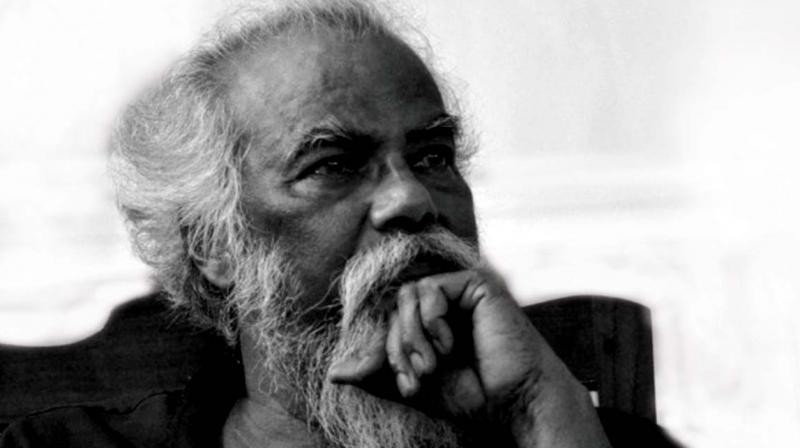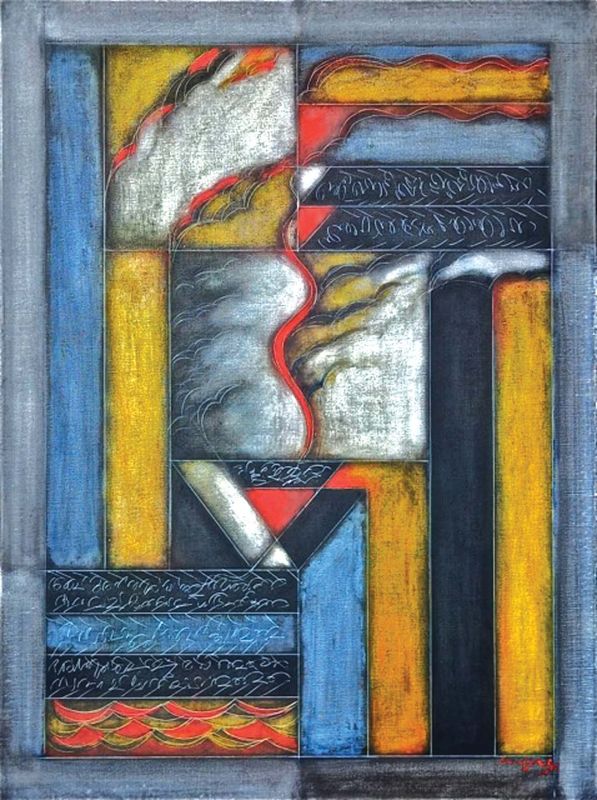Art of lyrical intuition
Curator and art critic Shruti Issac analyses the hypnotising paintings of the noted artist.

According to the avant-garde French play wright Eugene Ionesco, an abstract painting is like theatre: a construction in action that moves, clashes, balances, transitions and creates new forms, stirring with life. The art of Akkitham Narayanan is an evocation, an act of prayer that holds together the divine forces on a canvas.
At first glance, his painting seems strange: full of squares, triangles and vibrant circles. But slowly, the perfect diffusion of tones takes effect and the hypnotising forces begin to interact, making the composition appear to be in eternal motion. Akkitham Narayanan’s paintings are the result of geometric configuration of abstract forms that create a fusion of the Indian tantrik art and the European geometric art.
The Indian element in his composition is the manifestation of the memories of his ancestral home in Kerala and his art education under the renowned artist K.C.S Paniker at the Government School of Arts, Chennai. His mentor, the late K.C.S had once remarked that his works ‘though intellectual and constructivist in character, have a deep emotional quality mainly in the sense of colour and choice of theme’.
Narayanan further explains this phenomenon, “I compose abstract forms that evoke the images of my life with my family in Kerala, where cultural, spiritual and ritualism were very much present. These moments live in me and create the soul of my painting.”
While the choice of subject necessitates a ritual, Narayanan at work in his studio, is in conflict between the discipline of an ancient ritual and the freedom his emotions demand while painting. He breaks free of this internal conflict by breaking out of the geometric forms through the colours on his canvas.
He explains, “The diagrams of the Mandala/kalam or Kolam made on the earth, coloured white (rice flour), yellow (turmeric), black (grain of burnt rice grain), red ( a mix of turmeric with lemon) and other elements for religious ceremonies along with the folk forms have had a strong influence on me. My work today is the result of these old and new experiences that I have accumulated before and after my visit to Europe.”
The colours in his work reveal symbolic meanings of night and day, life, growth, decay and death. He weaves together a world of geometric figures where they seem to have a sensual presence. The mandala transforms itself into a living and visual symphony in his art.
The process of creation does not end on the mere application of the colours. Lines are scratched onto the surface: twisted and turned to create a symphony in which colours, shapes and light orchestrate a world of vibrations and energies. His art becomes an act of passage into the unreal which opens into a metascape. Like in the act of meditation, the viewer reconnects, contemplates and addresses one’s inner self.
In front of his canvas, one often wonders at the power of the moving line in the creation of a mystical space that evokes pure energies like in the rite of Kalamezhuthu. Italian philosopher Benedictto Croce defined art as the expression of sentiment, a pure but vital act of the imagination, which shares imagination’s primal innocence. Akkitham’s art is a celebration of this primitive lyrical intuition.
Narayanan will be awarded the prestigious Raja Ravi Varma Award by the Lalithakala Akademi, Thrissur, for his unique contributions to modern painting on February 14. He arrived at his own unique style of painting after an artistic journey of four decades based on the tantric tradition. After a successful solo show in Seoul last year, his solo exhibition is scheduled for October 2017 in Paris.


